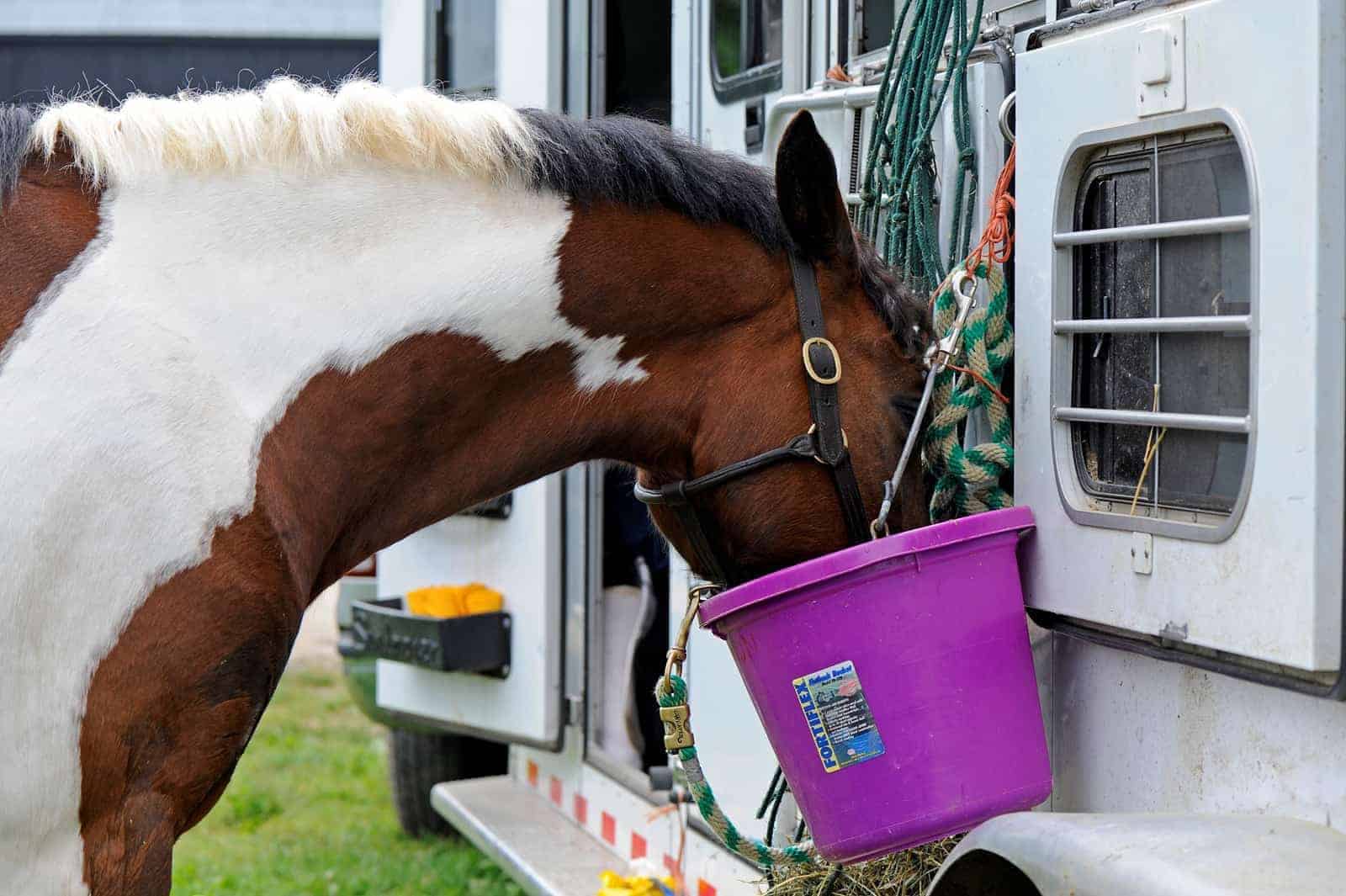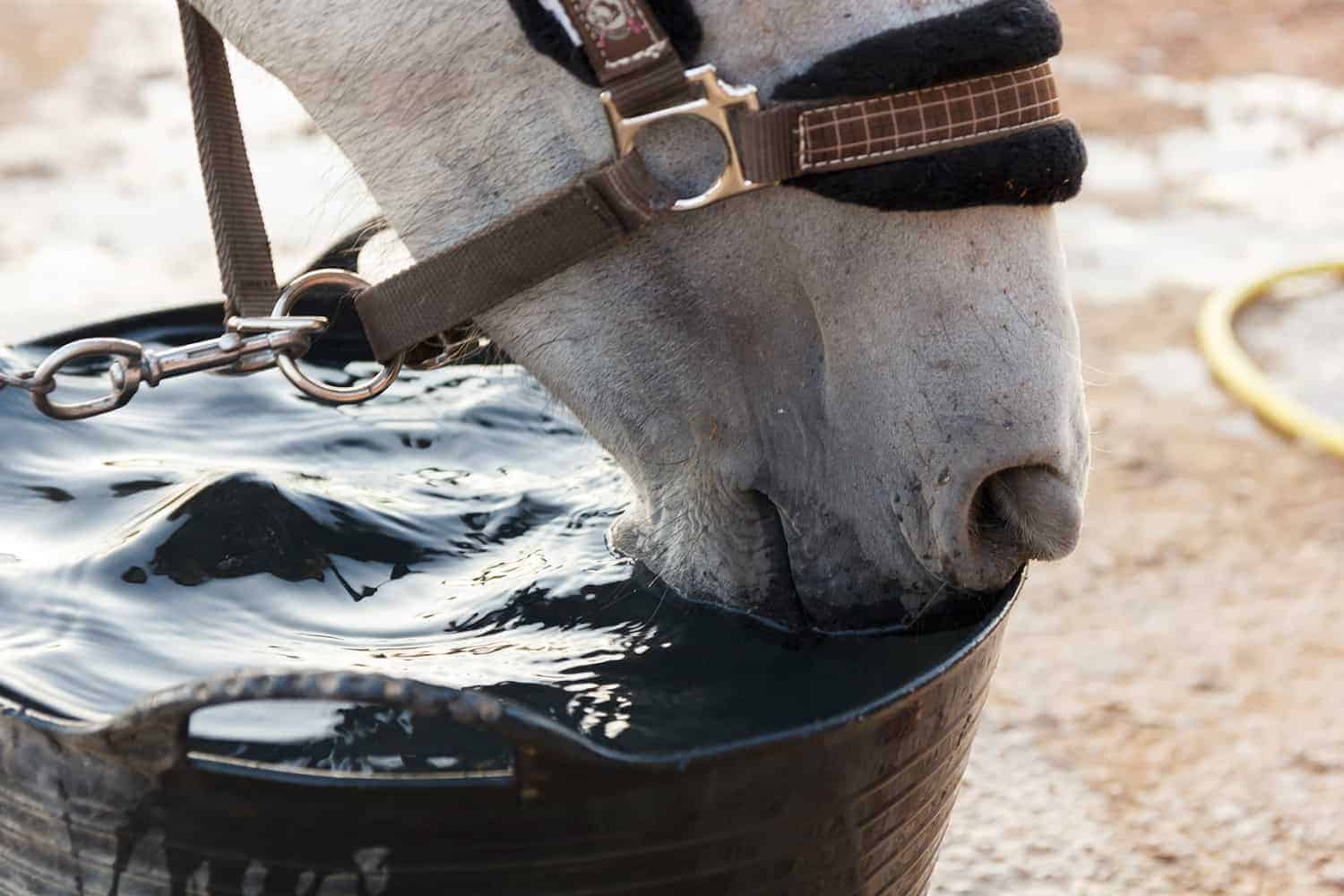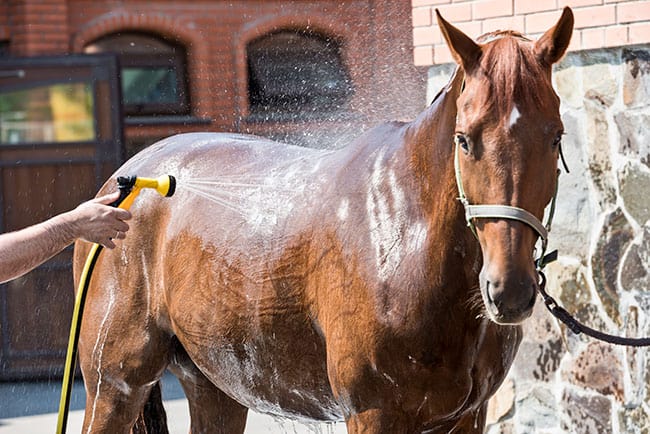Shipping and Showing Horses

Monitor and optimize your horse’s training, diet, general health, and shipping experience in order to help him perform his best.
For some, nothing compares to the excitement of a horse show. The anticipation of months of hard work finally paying off with the faultless jump, the perfect pirouette, or the impeccable sliding stop, and the chance of winning a trophy or ribbon as a memento of a goal accomplished or cash to help pay the horsekeeping bills. But from the moment your horse steps into the trailer until the final class of the day, the way you care for your horse can affect his performance in the ring.
At a show the unfamiliar surroundings, the change to his daily feeding and exercise routines, and temperature fluctuations will subject your horse to physiological and psychological stresses. In addition to being stressed, he’ll be asked to perform short, intense exercise sessions multiple times in a day, sometimes with only an hour or two of rest between rides.
However, with the right preparation and management, you can give your horse every advantage to perform at his best. Here are some tips based on science to help you and your horse.
Shipping
Trailering can be psychologically and physiologically stressful for horses, particularly if they haven’t been trained to load properly. The agitation that goes along with psychological stress is also physically detrimental, causing excessive sweating and fatigue as well as suppression of the immune system, all of which can negatively impact performance. The best way to combat psychological stress on the way to a show is to acclimate your horse to travel. Train him to load into a trailer quickly and quietly, then make short trips to nearby destinations.
When you’re in a new place, focus on keeping your horse calm and obedient, with his attention on you. This will teach him to focus on his performance in any environment.
Trailering to a show, especially over long distances, is also physiologically stressful on horses. Balancing in a moving trailer can cause muscle fatigue and soreness, and hard floors can place strain on tendons. Hot summer temperatures make your horse prone to sweating and overheating, and an inability to access water can lead to dehydration.
Trailering should be viewed as a type of exercise and every precaution should be taken to minimize its impact on your horse. Choose a trailer that is roomy enough for your horse to be comfortable, and make sure the footing provides cushion and traction. Stop often to offer your horse water, and pay special attention to the ventilation and interior temperature of the trailer. The more comfortable your horse is when traveling, the more likely he will arrive at the show fresh, calm, and ready to compete.
Exercise
As mentioned above, horse shows often require multiple short-duration, high-intensity exercise sessions each day. For optimum performance, you should include high-intensity workouts in your training schedule that mimic what he’s called upon to do in a show. Once he acclimates to working at a higher level, you can ride two or even three times in a day, just as you would in a show. This will improve your horse’s fitness and train his muscles to recover more quickly.
This type of high-intensity workout shouldn’t be used more than once a week, however, and you should watch your horse closely for any signs of stiffness or soreness and adjust your workouts accordingly.
At home and at the show, be sure you warm up before and cool down after each ride. A thorough warm-up helps to prevent injury and can improve performance by mobilizing energy sources in the blood. A proper cool-down returns your horse’s body temperature, heart rate, and respiration rate to normal while metabolic wastes are removed from his muscles. This will decrease post-exercise soreness and help improve subsequent performances. In fact, monitoring these three variables before and after exercise can give you a good idea of your horse’s fitness. Once you establish what the “normal” temperature, heart rate, and respiration rate are for your horse after he exercises, you’ll be able to judge how quickly he’s recovering and whether or not he’s ready for another bout of exercise.
Energy and Hydration
Colic and dehydration are two common problems encountered at horse shows. The equine digestive system is particularly unsuited to change, so try to minimize changes to your horse’s feeding regimen while you’re on the road. Bring your own hay and grain from home or buy feed at or near the show site that’s similar to your own. Call local feed stores ahead of time and tell them what type of grain you usually feed and ask if they have something comparable.
Dramatic changes in feed amount or composition can alter the pH and motility of the digestive tract and can impair performance through water loss, increased heat production, or inefficient absorption of nutrients. Grain is best fed in small quantities three to five hours prior to exercise to maintain blood glucose levels and prevent fatigue. If a meal is delayed, then reduce the grain portion of that meal and return to a normal meal size at the next feeding. If a meal is skipped, the amount of grain fed at the next meal should not be increased to compensate.
Hay intake is important as well, as it helps retain water in your horse’s digestive tract and, therefore, can prevent dehydration and colic.

While many competitors bring feed from home, most are not equipped to bring water. Although most horses will drink whenever they are thirsty, some will refuse to drink water with an unfamiliar smell or taste. A common remedy for this is flavoring the horse’s drinking water at home and adding the flavoring to the water at a horse show. Some people even bring gallon containers of bottled water from the grocery store! Whatever your method of coping with this problem is, your rule should be that if the horse doesn’t drink, he doesn’t compete.
An average horse should consume about 7 gallons of water daily, although this can increase up to 300% for horses exercising in hot, humid climates. Offer water in small quantities during cool-down and after each ride. Some riders give electrolytes to encourage their horses to drink (a high salt concentration in the blood stimulates thirst), although it is important to always offer plain water in addition to electrolyte-supplemented water.
Monitor your horse’s water intake while traveling and ask your veterinarian to show you how to check for dehydration using capillary refill time. Even mild dehydration can impair performance and prolong recovery time after exercise.
A practical approach to make sure your horse is fed and watered at regular intervals is to plan a schedule before the show. Estimate when you will need to be in the show ring and plan to feed your horse two to three hours before you begin warming up. Determine when you’ll have time to make it back to the barn to offer your horse a drink, or have someone bring a bucket of water to you outside the warm-up area. The more you can support your horse physiologically, the better he’ll be able to perform for you.
Temperature Management
Horse show weather always seems to be predictably uncomfortable. Whether it’s hot or cold, the weather can impact your horse’s performance, and it’s your job to make sure he stays as comfortable as possible.

In cold weather adjust your warm-up to allow extra time for blood to start flowing to cold muscles. Walk your horse for at least five minutes and incorporate some easy lateral and longitudinal stretches to loosen up his muscles. Progress to easy trotting for at least another five minutes before beginning your regular exercise. Immediately after your ride, reverse the warm-up procedure for an efficient cool-down, then cover your horse with a sheet or cooler until he is dry and cool. If you can, offer water that has been warmed slightly, as this can encourage your horse to drink.
During hot weather you should concentrate on preventing your horse from overheating. Excessive body heat causes blood to be shunted away from the working muscles and to the skin to help cool the body. When this is combined with decreased blood volume caused by dehydration, your horse won’t have enough blood flowing to his muscles to perform well. Preventing this situation can be as simple as offering your horse water at regular intervals or keeping him in the shade as much as possible. Hosing with cold water after exercise is extremely effective in reducing core body temperature, especially when combined with the use of a fan.
Again, close monitoring of your horse’s temperature before and after each exercise session will give you early insight into any potential overheating.
Take-Home Message
At a horse show, you’ll be asking your horse to perform at his highest level, often multiple times each day, in a strange environment, and often in suboptimal conditions.
As a rider, it is your job to support your horse and give him the tools he needs to perform at his best. Like all aspects of competition, this support begins at home with careful planning and an appropriate training regimen. It culminates on the day of the show, when you create a safe and comfortable environment and ensure your horse is physically prepared for his performance. And sometimes it all ends with a trophy or check to mark your achievement.
Written by:
Samantha Steelman, PhD
Related Articles
Stay on top of the most recent Horse Health news with















